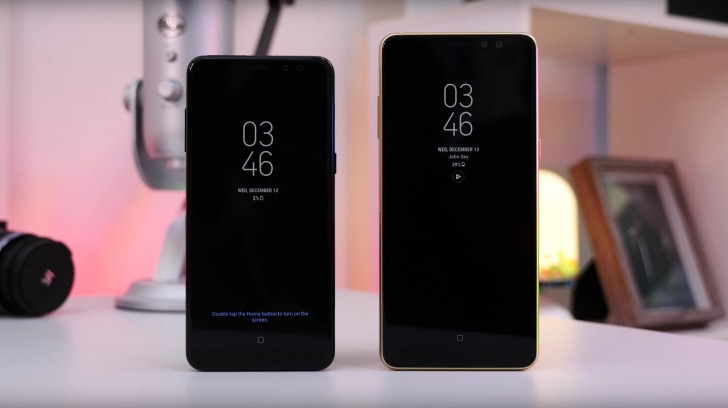Samsung’s upcoming smartphones — Galaxy A8 and Galaxy A8 Plus, has appeared in a hands-on video ahead of its official launch. The smartphones are said to be the successor of the Galaxy A5 and Galaxy A7.
The newly leaked hands-on video reveals the smartphone’s design. The video confirms that there will be a fingerprint sensor placed at the back of the phone, located just below the camera module. However, it seems that the video has now been taken down.
The camera sensor is equipped with a single LED flash. At the back, there is a 16-megapixel rear-facing camera sensor while at the front, the phone features an 8-megapixel sensor. The front-facing camera also supports face recognition feature.

The video also reveals that the phone will come with a full-screen display with an aspect ratio of 18:9. The phone will feature speakers on the side and interestingly, the devices won’t have dedicated Bixby button.
Internally, the smartphones will be equipped with Samsung‘s own Exynos 7885 processor along with 6GB and 4GB RAM models, and 64GB / 32GB internal storage. There is also a microSD card slot, allowing users to further expand the storage capacity of the devices.
The difference between both devices — Galaxy A8 and Galaxy A8 Plus is the display size and the battery capacity. While the Galaxy A8 will come with a 5.5-inch Full HD+ Super AMOLED display, the Plus variant will feature a 6-inch Full HD+ display with Super AMOLED display. Similarly, the Galaxy A8 packs 3,000mAh battery whereas the Galaxy A8 Plus is fuelled by a bigger 3,500mAh capacity battery.
Read More: Samsung Galaxy S9, Galaxy S9+ Reportedly Launching on February 27 at Mobile World Congress 2018
The smartphone are said to come with IP68 certifications, making the devices water and dust resistant. While the phone’s launch date is not known yet, but since the hands-on video has been leaked, it is expected to make its way to the market soon. We are expecting the devices to get announced at the Consumer Electronics Show (CES) 2018.






